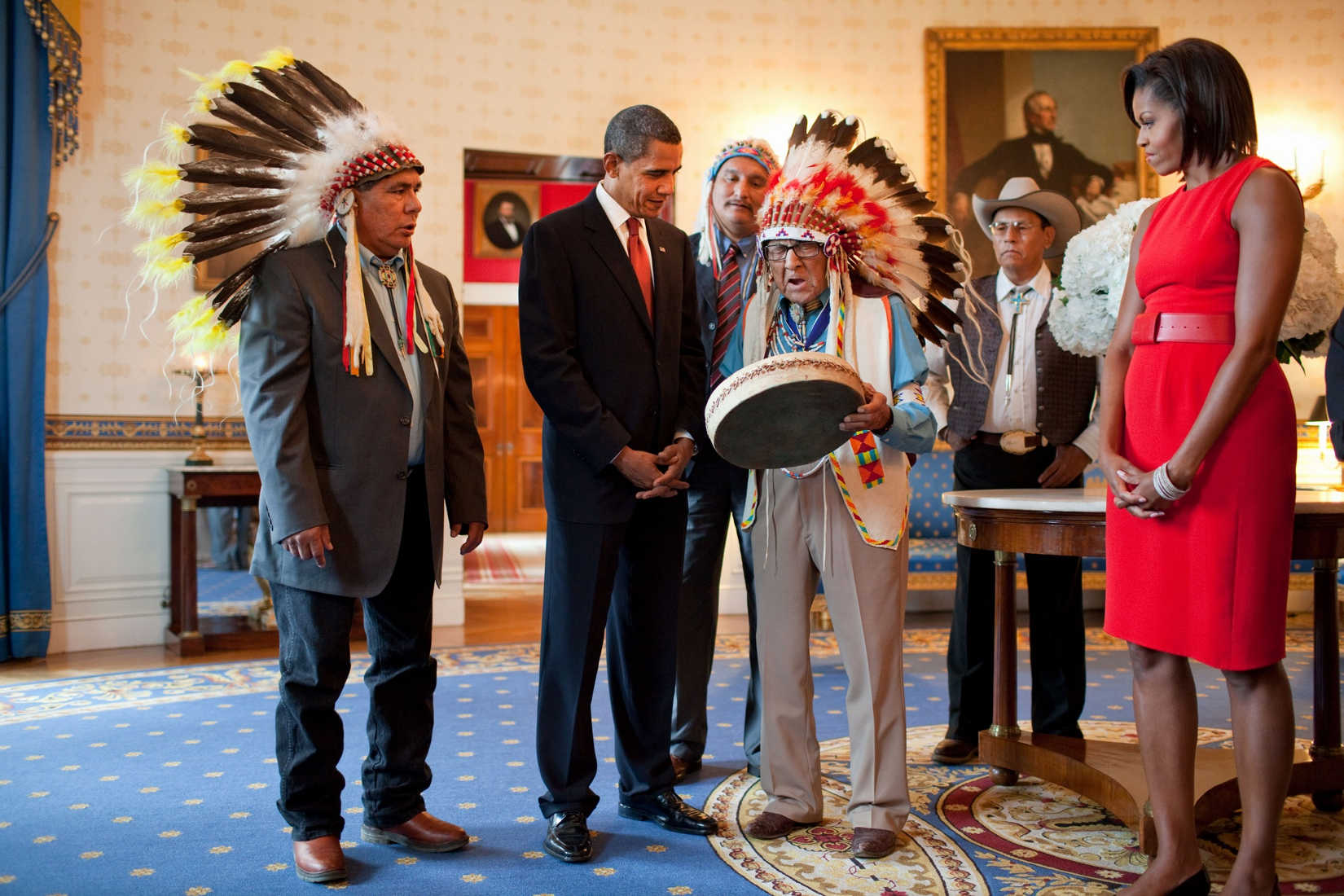By: Randy Tucker
He carried an eagle feather under his helmet, a feather given to him by a Crow medicine man at a Sundance before he left to fight the Nazis in Europe.
Joe Medicine Crow was an amazing man prior to World War II and became a legend after the war ended.
Born in 1913 near Lodge Grass, Montana, Medicine Crow was the grandson of Crow scouts who served with Custer at the Battle of the Greasy Grass (Little Big Horn) back in June 1876. The warrior tradition was strong in Medicine Crow.
He graduated from high school and earned a bachelor’s degree at Linfield College in sociology and psychology in 1938, the first member of his tribe to graduate from college. A year later he earned a master’s degree in anthropology from the University of Southern California.
Medicine Crow taught a year at the Chemawa Indian School, then went to work in the shipyards at Bremerton, Washington in 1942.
“I got a letter from my uncle,” Medicine Crow joked, “My Uncle Sam and joined the Army.”
Medicine Crow was sent to Europe and found himself on the Siegfried Line, trying to find an entry point through the German defenses with his unit, the 103rd Infantry, in late 1944.
In Crow tradition, to become a war chief, you must do four things. Those four are to lead a raid into enemy territory, touch an enemy, take his weapon, and capture horses.
In an era of machine guns, heavy artillery, minefields, and tanks, this seemed impossible, but the impossible was anything but that for Medicine Crow.
Medicine Crow led a squad of men down a back alley as his unit fought door-to-door in a German-occupied town. His first task as a warrior was complete; he had led men into battle.
As he moved down the alley, he ran literally headfirst into a German soldier. When the two men collided, it knocked them backwards. Medicine Crow hit the German with the butt of his M-1 Garand, knocking the enemy soldier’s rifle from his hands.
In Medicine Crow’s own words, “I could have killed him with a single shot, but something came over me. I dropped my rifle and tore into him. He was on top of me, but I rolled him over and started to choke him to death. As my hands tightened, he started saying ‘Mama.’ I let him up and took him prisoner.”
Medicine Crow had touched an enemy and taken his weapon, completing steps two and three of becoming a war chief, though he thought little of it at the time.
A few days later, his unit was advancing, and Medicine Crow spotted some horses tied outside an enemy position with the infamous German SS suspected to be inside.
He told his company commander that he thought he could stampede those horses, and the German SS wouldn’t be able to get away.
Medicine Crow, armed with only a .45 ACP 1911 pistol, crept up on the German position and cut the lines tethering the horses.
“I made an Indian bridle out of a piece of rope,” Medicine Crow said. “I put it on one of the horses and rode it away from the German position, stampeding the other horses back towards our lines.”
As he left, the Germans began to fire at him, but he got away. Just a few seconds later, with Medicine Crow in sight, leading the string of horses, his own unit opened up on the Germans with mortar fire. As he rode, he sang a traditional praise song in his own Crow language to thank the creator.
Medicine Crow had done the improbable: he had completed the four sacred acts that a Crow warrior had to do to become a war chief.
When he returned to Montana after the war, a ceremony was held by the Crow tribal elders, and Medicine Crow was formally named a war chief, the last one of his people to earn that honor.
Before going into battle, Medicine Crow would paint red stripes on his arms, under his Army issued uniform and jacket.
It was common in World War II for Army commanders in Europe and Marine commanders in the Pacific to find Native American men in their units and use them as scouts, forward observers, and to ask them to lead groups into battle.
The warrior tradition ran deep in these men and still does among many of the tribes of the Great Plains.
After the war, Medicine Crow became the official historian of the Crow people and worked as a tribal anthropologist.
He addressed the United Nations General Assembly in 1999.
On August 12, 2009, President Barack Obama presented Medicine Crow with the Presidential Medal of Freedom.
Medicine Crow passed away on April 3, 2016 at the venerable age of 102.
The last Crow war chief is survived by his son Ron Medicine Crow, his daughters Vernelle Medicine Crow and Diane Reynolds, and his step-daughter Garnet Watan.
Randy Tucker is a retired history teacher and freelance writer from western Wyoming. He has a lifetime of experience in farming, ranching, hunting and fishing in the shadow of the Wind River Mountains. Contact him at [email protected].
Photo Credit: By Pete Souza – Original file and credit to Pete Souza, Public Domain, https://commons.wikimedia.org/w/index.php?curid=47989467

